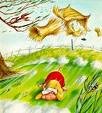Up there with the very best posts =time saver post nine
The question was raised in Spanish89's thread about why I asserted: "Do not "trade" because what you are doing is building conditioned responses that will be almost impossible to overcome." I also said: "The heart beating means you are having intense experiences which will be forming links in your brain and will reinforce any bad behaviours ... YOU DO NOT WANT TO DO THIS!"
So why should I think that doing the wrong thing while in a state of high excitement would create a habit that was unusually hard to break? For that I will have to borrow from Dr Bruce Hong (who's blog, referenced below, I heartily recommend.)
Well, in the brain, there are certain types of receptors and neurotransmitters that are associated with forming Long Term Potentials or LTP's for short. This special neurotransmitter is a common and easily synthesized molecule - Glutamate. Each time an action potential comes across and releases a Glutamate molecule, the Glutamate receptor binds to it but it does not fire. Instead, it requires many glutamate molecules to bind to it; perhaps as many as several hundreds or thousands repetitive transmissions of a signal before its threshold is reached - and then it fires. But when it fires it's like the Big Bang of action potentials. And it causes not only a massive discharge of excitatory energy, but it causes a permanent change in that synapse. And that is what we call a Long Term Potential (LTP).
I won't go into too much detail ( believe me, it's complicated), but that neuron is now permanently 'primed and ready to fire.' Any time the conditions are right and a new signal comes on down the pike, it doesn't require a lot of signal repetitions anymore. Instead, ONE signal may be all that's required for it to fire. We have now formed a permanent neurological pathway. If that pathway is associated with a fact, we call it learning. And if that pathway is associated with a behavior, we call it a habit. And the neuron doesn't know whether it's a good or bad fact or habit, only that when it receives its signal, it has to fire.
We are now starting to see how we learn both good and bad habits. And once we learn them, they're in there for a very long time. How long? Well, I'll give you a few examples. we all know older people who complain that they can't remember recent events, like where they put their glasses. But they can recall with crystal clarity incidents that happened in their childhood. Here's another example. Go to a nursing home and visit the severely demented. Start singing "a, b, c, d..."
and many of these elderly, demented patients will chime in "e, f, g..."
Many of these patients will be so demented that they can't remember their children's names - or even their own! But they can still sing the ABCD song!
Now here's the take-home message. As you can see, it requires many repetitions to form an LTP. Like a kid in Little League, you have to take many turns at bat before you learn to hit a thrown ball. And you have to shag a lot of grounders and fly balls before you learn to catch. But once you've learned, it's in there forever. Have you ever said anything like, " once you learn to ride a bike, you never forget"? Good habits and skills take a lot of time, effort and repetition to acquire. But so do bad habits! They don't happen overnight - you have to really do a lot of work or repetitions in order to acquire bad habits! And once formed, they're in there forever!
So, if you are a new trader, you must accept the fact that you won't know what to do at first. If you rush in to trading and repeat the typical mistakes that all new traders seem to make, you will learn nothing but bad trading habits. That is why >90% of new traders fail. Before you begin to trade, you must be willing to put in the time an effort to educate yourself. Perhaps you can ask an experienced trader to mentor you. Read a lot of books on trading. Learn the principles of money management and position sizing. And perhaps you can avail yourselves of the FEW FREE resources out there to help you begin and learn.
Last week, we explored the role that repetition played in learning. Good, old fashioned, rote learning. There is a tendency to say that this is "bad" and that students should be taught in such a way that learning is "fun." There may be some truth to that, but it still takes repetition and drill. Even the most unmotivated and bored student can learn if the lesson is repeated often enough. After all, how much fun is there is saying, "2 times 2 is 4, 2 times 3 is 6...etc"
But now, let's look at some of the ways that emotions can modify the learning (or LTP) process. Let's say that you're a proto-human, walking down a jungle path. Suddenly, a tiger jumps out at you - a really BIG tiger! Instantly, you perceive a threat. Adrenaline is released from your Adrenal Gland and it causes you to increase you heart rate, blood pressure and redistribute blood flow away from your digestive system (no need to worry about digestion now) and skin (don't want to bleed too much). Instead, blood flows to the muscles and the brain. Your pupils dilate so that you can see so much more and you are primed for "fight or flight."
This is what, in biological terms, is called an acute, MILD stress. Mild, in biological terms means that you have not had a limb torn off or that you are not exsanguinating. Acute means less than 5 minutes, or so. That is how long adrenaline typically lasts - unless it is continually stimulated. Once again, in our hypothetical situation, you either survived - or you didn't.
So much is commonly understood by everyone. But what is not appreciated is that that blood flow, in the brain, is redistributed AWAY from the frontal cortex and TO the motor and ocular cortex. After all, you don't need to make long-term plans at this point. Either you survive - or you don't. The blood flow to the motor cortex makes you able to move fast, in a coordinated way. You even have an irresistible urge to do something, anything.
But Adrenaline does something more. It stimulates the synthesis of cortisol, also in the adrenal gland, and with the changes in blood flow, this is carried directly to the brain. There, it primes a number of critical areas of the brain that are associated with learning and memory. Now, instead of hundreds or thousands of repetitions, ONLY ONE MAY BE REQUIRED! After all, how many encounters with a tiger do you require before you learn that tigers are dangerous?
This acute stress response is one very potent way to increase LTP'ing of neurons - and you can see how it would have a biologically important role. Things that are potentially threatening MUST BE ATTENDED TO. And so, to help really nail that down, cortisol also primes a very critical area of the brain. This is the Amygdala. The amygdala is part of the limbic system and is given the task of remembering the emotional tone associated with that LTP episode. The next time that you recall that encounter with a tiger, all the fear and blind panic associated with that encounter will also be recalled. And vice versa, the next time that you have a moment of fear, that episode with the tiger will leap into your immediate consciousness. And that emotional tone acts as an amplifier to make sure that we never forget that encounter (or lesson).
Now, in our hypothetical case, we've survived and an we feel an immense sense of Joy and Relief. Another part of the brain releases Dopamine and Dopamine is the biggest reward that the brain can experience. All those drugs that you've heard about, like cocaine or crystal meth work by stimulating the release of Dopamine in the brain. And Dopamine also facilitates the LTP'ing of neurons. Perhaps even more so than cortisol.
And so now, we've had a double reinforcing of our learning experience. Both the acute stress response, followed by our relief/reward response help to nail down that learned experience. And not only that, but Dopamine can do it all by itself. Our proto-human needs to learn not only how to avoid threat, but where rewarding substances are found, and in what season. This is the response that good teachers try to evoke when they make learning pleasurable. In that way, your brain's own Dopamine reward system does all the work for them.
But, we all know other teachers who may have approached teaching from another direction! And guess what, evoking the acute stress response (through threats and intimidation) also works! It's just not very pleasant. This, incidentally, is one of the theories behind the use of punishment to try to modify a person's behavior. But while it may cause LTP'ing to occur, it has very unreliable effects on behavior. I'll have more to say about that subject in a later post.
Now, here's the take-home message. Instead of a proto-human, let's look a Joe Trader. He starts off, full of confidence and plunges into trading without really understanding what he's doing or having a trading plan. The losses start to mount and now, each time he enters a trade, he starts to feel more and more stress. Because of the Adrenaline, he has an overwhelming urge to do something; AND SO HE MAKES ABRUPT, IMPULSIVE DECISIONS. These may work out, or he may choose to exit at the very worst time, or to take profits too soon. Remember, blood flow is directed AWAY from the frontal cortex and so he's really not able to make good, reasoned, long-term decisions.
Let us further suppose that he's entered a trade and that it's gone against him. Because he's unwilling to take a loss (another good subject to explore later) and because he's making impulsive decisions. let's say he make another poor decision. Not having stops. Removing his stops or moving them further away. Scaling in more contracts in order to "average down". You know all these mistakes - right?
Now he's under a lot of stress and the cortisol is making him really attend to what is going on and remember everything. Suddenly, the market reverses, rescuing his position and giving him an even greater profit. BAM! LOTS OF DOPAMINE. And lots of LTP'ing.
Joe Trader is well on his way to permanently acquiring a really destructive trading habit. Perhaps only a few more repetitions of this behavior/stress/ big reward pattern will be necessary to make this permanent! And we now see how and why over 90% of traders fail.
If you're interested I suggest you follow the link to Bruce's blog where there are some pictures to make more sense of this and some excellent material about the impacts of our minds and bodies on trading --- and what we can do about it.
TraderPsychology
Nine
so impressed I just have to post once more nine, think your post right up there with the very best imho its a real time saver for anybody interested in getting it right quicker than most probably manage.
I would add and without any hesitation or thought
You can train the correct response into yourself with very little effort whats so ever if.....
IF you accept the above is correct or have or are experiencing or just see some of the above give aways / tell tale signs, think we probably all see a bit even if we are profitable etc
I check my trades each and every day for drift in execution of plan as per ideal
The Five Fundamental Truths
1. Anything can happen.
2. You don’t need to know what is going to happen next in order to make money.
3. There is a random distribution between wins and losses for any given set of variables that define an edge.
4. An edge is nothing more than an indication of a higher probability of one thing happening over another.
5. Every moment in [a game] is unique.
The Seven Principles of Consistency
1. I objectively identify my edges.
2. I predefine the risk of every [betting decision].
3. I completely accept the risk or I am willing to let go of the [hand].
4. I act on my edges without reservation or hesitation.
5. I pay myself as the [game] makes money available to me.
6. I continually monitor my susceptibility for making errors.
7. I understand the absolute necessity of these principles of consistent success and, therefore, I never violate them.
red above applies in the good times to = more so because....................
when you are doing something really well you do not pay full attention (enjoying ones self to much in the moment) and it is very hard to replicate again hence people refer to it in some vague way or term
THE ZONE
The Zone is nothing special, everybody can be in the zone and in fact most are every day of their lifes without realising it
Its just unconscious doing something, anything to a reasonable / good professional standard. It as become unconsious because you have carried out the task many times and thought at a monitored level is no longer required.
Boiling a poached egg and getting everything else ready so everythings ready at the same time (without a clock / watch for reference
😛) driving a car etc.
The first sign that you are not in the zone is an awakening in your mind, you become aware of the moment = BEWARE, performance is dropping off you are in fact manually controlling actions. Very often at this time a bit of your brain will sort of remind you not to do something daft, it may be quite specific, the chances of making that exact error have just reached un exceptable levels and only a very trained individual will escape from the moment and act professionally in that moment.
Trading is seen as very clever and some individuals (myself included) build up barriers in their own mind to in fact re-enforce that
OPINION hence from that moment forward ~
Bingo its hard, I still find it hard to execute late in the day, late in the day
😕 means nothing its just a daft none relevent emotion
EXECUTE EACH AND EVERY TIME YOU GET YOUR TRADE SET UP AT THE MARKET
I am no brains, far from it and I learnt the hard way, not the very hard way I had a little more sense than that. It was hard enough between the ear holes to dish every pre-concieved idea I ever held regards errrrrrrrr
Just about everything really and start again from the beginning.
AND MAINTAIN IT
good starting point imho
T2W Day Trading & Forex Community
1. demo platform
2. plan which includes ENTRY EXIT (known at entry) reasons for ( it does not need to be a 100 page document, timsk as one if you pm him and ask nice
🙂)
3. money management rules per trade and a fixed bank (realistic level)
4. TRADE IT IN THE WAY YOU WROTE IT (do not second guess it, you wrote it and I presume thought about it so F..CKIN EXECUTE IT WITHOUT ONE THOUGHT OR FEELING at this stage (demo) thats your job / goal nothing else, hell if its a s...t plan you can always write another one later.
Four above, you must believe 200% the reason why you must do it like this, so follow nines link and google everything on this one.
You have thought and done your research 4 = EXECUTE IT, after say a period of 2-3 weeks you should be totally bored stiff, the hardest part is staying awake.
After that period you have trained yourself at a
superficial level only to EXECUTE on sight no ifs or buts...............
HOLD IT, its not that simple, assuming you are profitable and EXECUTED without error :?:
Bordom period over, check everything, make adjustments to plan / rules as per observed requirements and go back and do it again, and again ..............
YES FOUR WEEKS
repeat above till your happy
OFF for live test = small stakes
EXECUTE EXECUTE EXECUTE :?::?::?: did you
what :?:
think, second guess it, did your heart rate increase, at that moment (stakes are small) the reason is your testing proper your method and the pressure is building, fear of failure is present = control it = work through it each and every day till it subsides.
In the trade write everything down EVERYTHING (small stakes) remind yourself your job is nothing special, all the hard works already done, you are just there to EXECUTE IT, you already no its high probability good method, you have nothing to fear other than
YOU NOT EXECUTING IT, if you do not execute your plan then you have failed a task that is as simple as ........................
putting the plug in the sink before you run the water
Famous regiments second or might even be their third motto (all top spot imho)
😛
Train Hard ~ Fight Easy
A very high achiever, sorry can not remember who but absolute huge earner in demand by everyone ......
when asked if he had to choose between attributes answered......
Flawless execution of a poor plan in preference to an excellent plan and P..ss Poor execution any day of the week for me.
All the best nine and everyone :clover:
House of bricks .................start building







